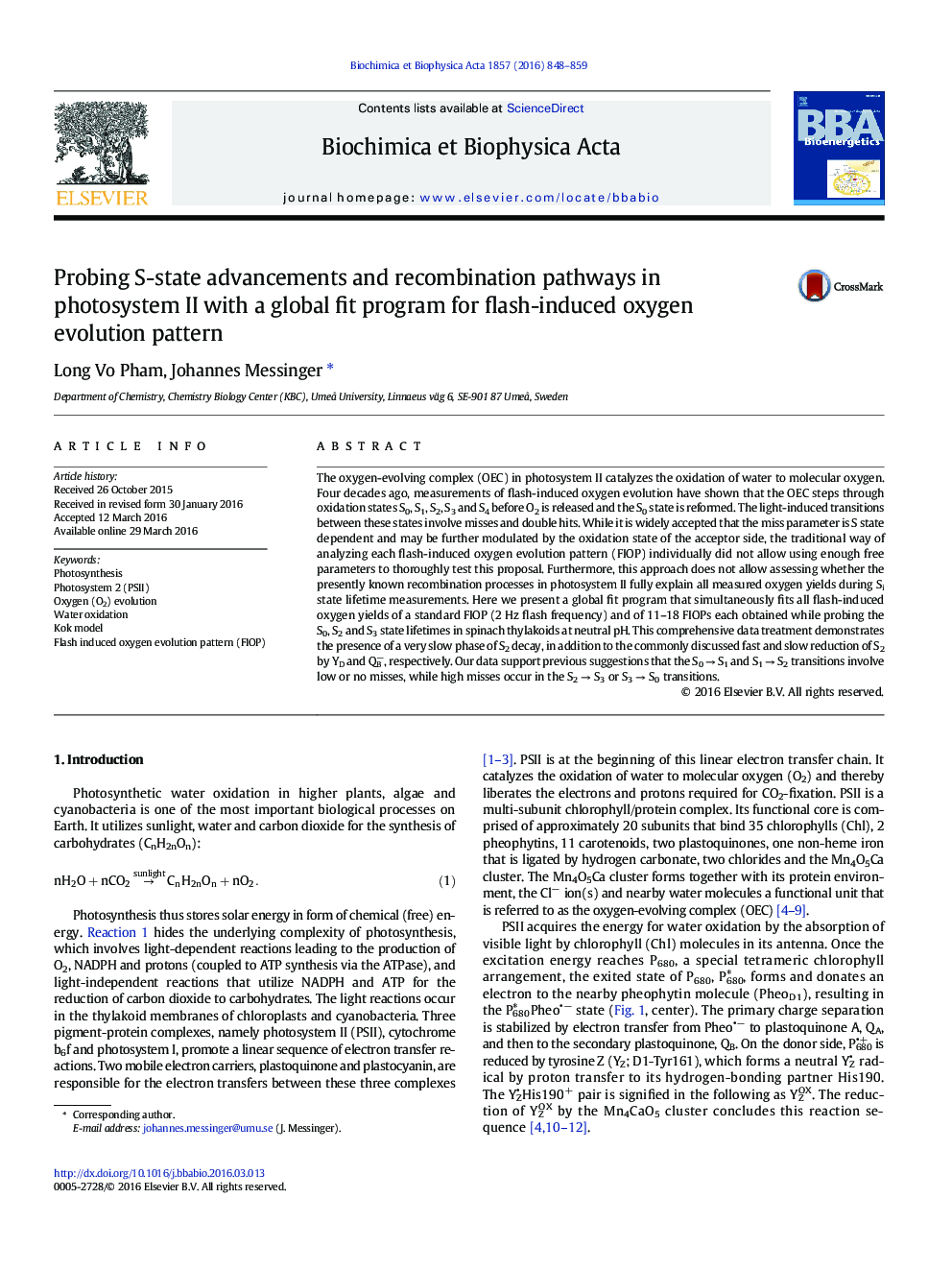| کد مقاله | کد نشریه | سال انتشار | مقاله انگلیسی | نسخه تمام متن |
|---|---|---|---|---|
| 1941940 | 1052560 | 2016 | 12 صفحه PDF | دانلود رایگان |

• A global fit program for flash-induced O2 evolution was developed.
• All Si state decays were fitted with one set of rate constants and miss parameters.
• The S2 state decay has three distinct kinetic phases.
• Miss probabilities of the S2 → S3 or the S3 → S0 transitions are high.
ABSTRACTThe oxygen-evolving complex (OEC) in photosystem II catalyzes the oxidation of water to molecular oxygen. Four decades ago, measurements of flash-induced oxygen evolution have shown that the OEC steps through oxidation states S0, S1, S2, S3 and S4 before O2 is released and the S0 state is reformed. The light-induced transitions between these states involve misses and double hits. While it is widely accepted that the miss parameter is S state dependent and may be further modulated by the oxidation state of the acceptor side, the traditional way of analyzing each flash-induced oxygen evolution pattern (FIOP) individually did not allow using enough free parameters to thoroughly test this proposal. Furthermore, this approach does not allow assessing whether the presently known recombination processes in photosystem II fully explain all measured oxygen yields during Si state lifetime measurements. Here we present a global fit program that simultaneously fits all flash-induced oxygen yields of a standard FIOP (2 Hz flash frequency) and of 11–18 FIOPs each obtained while probing the S0, S2 and S3 state lifetimes in spinach thylakoids at neutral pH. This comprehensive data treatment demonstrates the presence of a very slow phase of S2 decay, in addition to the commonly discussed fast and slow reduction of S2 by YD and QB−, respectively. Our data support previous suggestions that the S0 → S1 and S1 → S2 transitions involve low or no misses, while high misses occur in the S2 → S3 or S3 → S0 transitions.
Figure optionsDownload high-quality image (91 K)Download as PowerPoint slide
Journal: Biochimica et Biophysica Acta (BBA) - Bioenergetics - Volume 1857, Issue 6, June 2016, Pages 848–859